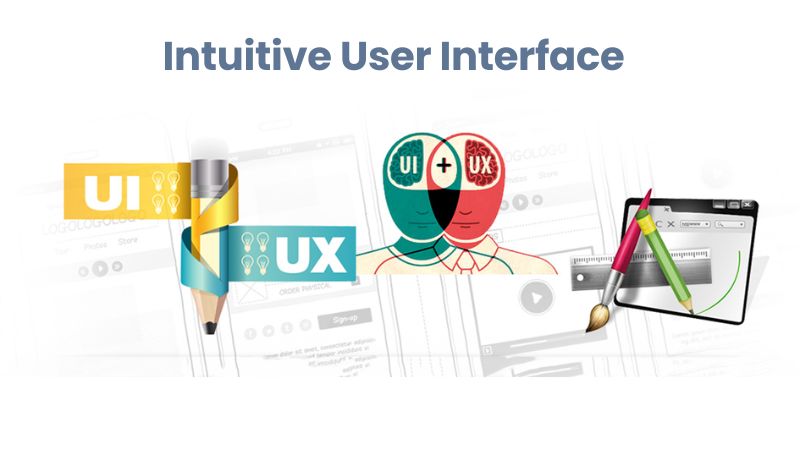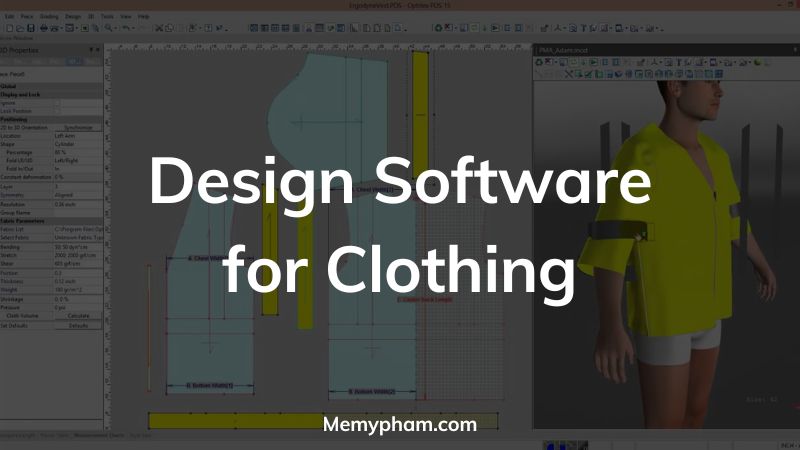In the fast-paced world of fashion, staying ahead of trends and meeting consumer demands is essential for success. Designers constantly seek innovative tools to streamline their creative process and bring their visions to life. In response to this need, design software for clothing from Memypham has emerged as a game-changer, empowering designers to unleash their creativity and revolutionize the way garments are conceptualized, developed, and manufactured.
Design software for clothing encompasses a comprehensive suite of tools and features tailored specifically to the needs of fashion designers, manufacturers, and retailers. From sketching initial concepts to simulating garment behavior and generating technical specifications, this software serves as a digital atelier where imagination knows no bounds.
The Power of Design Software for Clothing
Intuitive User Interface
At the heart of design software for clothing lies its intuitive user interface (UI), designed to provide designers with a seamless and efficient workflow. With customizable workspaces and support for both mouse and touch inputs, designers can navigate the software with ease, allowing for uninterrupted creativity. Whether working on a desktop computer or a touchscreen device, the UI ensures a fluid and intuitive experience, enabling designers to focus on their craft without distractions.

Versatile Design Tools
Within this digital atelier, designers are equipped with a versatile array of design tools, each tailored to specific tasks in the garment creation process. From sketching tools for brainstorming initial ideas to pattern tools for precise garment construction, the software offers a comprehensive toolkit for every stage of the design process. Textile design tools allow designers to create and manipulate intricate patterns and textures, while color tools provide precise control over hues, shades, and gradients. Furthermore, 3D modeling tools enable designers to visualize their creations in three dimensions, allowing for realistic prototyping and visualization.
Library and Asset Management
One of the standout features of design software for clothing is its extensive library and asset management system. Designers have access to a vast repository of pre-made patterns, textures, and clothing elements, enabling them to quickly prototype designs and explore new ideas. Additionally, the software’s asset management capabilities ensure that designs, patterns, and textiles are organized and easily accessible, streamlining the design process and reducing workflow bottlenecks.

Customization and Personalization
Customization and personalization are key components of modern fashion design, and design software for clothing excels in this regard. With features that allow designers to customize clothing designs based on individual preferences such as size, color, and style, the software empowers designers to create garments that resonate with their target audience on a personal level. Integration with body scanning technology further enhances customization capabilities, providing accurate measurements and ensuring a perfect fit for every body type.
Simulation and Visualization
Simulation and visualization tools are integral to the design process, allowing designers to bring their creations to life and visualize how they will look and behave in real-world settings. With advanced simulation tools, designers can explore different fabric types, draping techniques, and garment constructions, gaining valuable insights into the performance and aesthetics of their designs. Realistic rendering capabilities further enhance the visualization process, enabling designers to create photorealistic images that showcase their creations in stunning detail.
Collaboration and Sharing
Collaboration and sharing are fundamental aspects of the fashion industry, and design software for clothing facilitates seamless communication and collaboration among team members. Whether working together in real-time or asynchronously, designers can collaborate on designs, share feedback, and iterate on concepts with ease. Furthermore, the software’s sharing features allow designers to export designs in various formats or share them directly with clients and manufacturers, ensuring clear and efficient communication throughout the design and production process.
Integration and Compatibility
Integration and compatibility are crucial considerations for designers working in a digital ecosystem, and design software for clothing is designed to seamlessly integrate with existing workflows and software platforms. Whether integrating with other design software such as Adobe Creative Suite or ensuring compatibility with industry-standard file formats, the software ensures a smooth and frictionless workflow, allowing designers to focus on creativity rather than technical constraints.

Version Control
Version control is another essential feature of design software for clothing, providing designers with the ability to track changes made to designs over time and revert to previous versions if needed. With version control capabilities, designers can experiment freely with different design iterations, knowing that they can easily backtrack if necessary, ensuring a risk-free and iterative design process.
Manufacturing Support
Manufacturing support is a critical aspect of fashion design, and design software for clothing offers a range of tools to assist designers in the manufacturing process. From generating technical specifications to detailing measurements, material requirements, and construction details, the software provides designers with the information they need to bring their designs to life with precision and accuracy.
Training and Support
Training and support are vital components of any software ecosystem, and design software for clothing is no exception. With comprehensive documentation, tutorials, and training resources, designers can quickly familiarize themselves with the software and enhance their skills. Responsive customer support further ensures that designers have access to assistance whenever they need it, ensuring a smooth and productive design experience.
Conclusion
In conclusion, design software for clothing represents a transformative innovation in the fashion industry, empowering designers to push the boundaries of creativity and innovation. As fashion continues to evolve, design software for clothing will undoubtedly play a central role in shaping the future of the industry, driving innovation and creativity to new heights.
